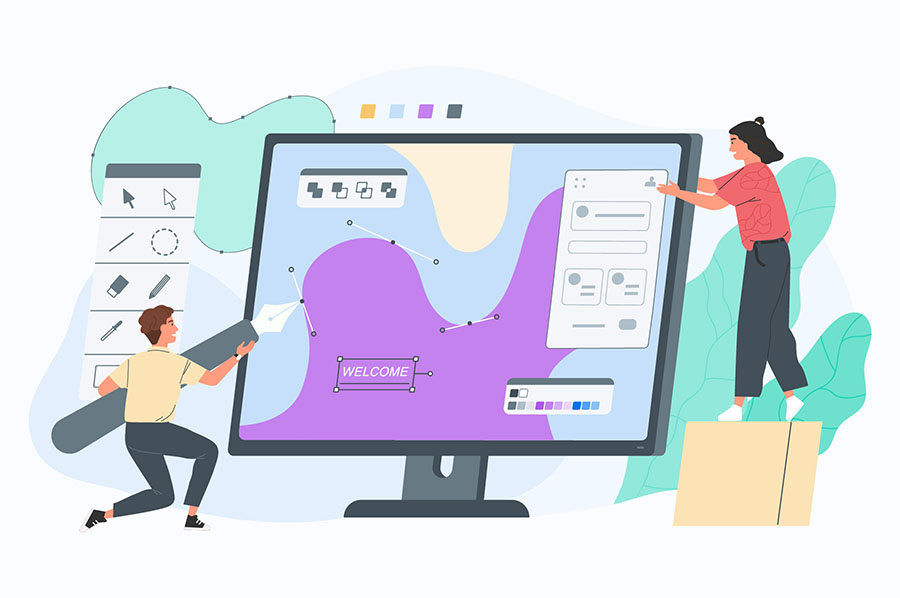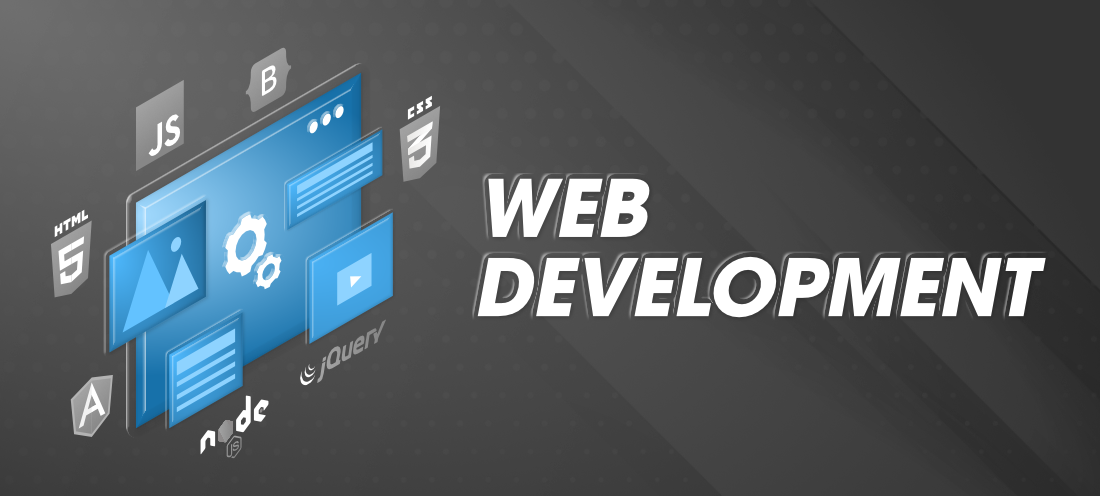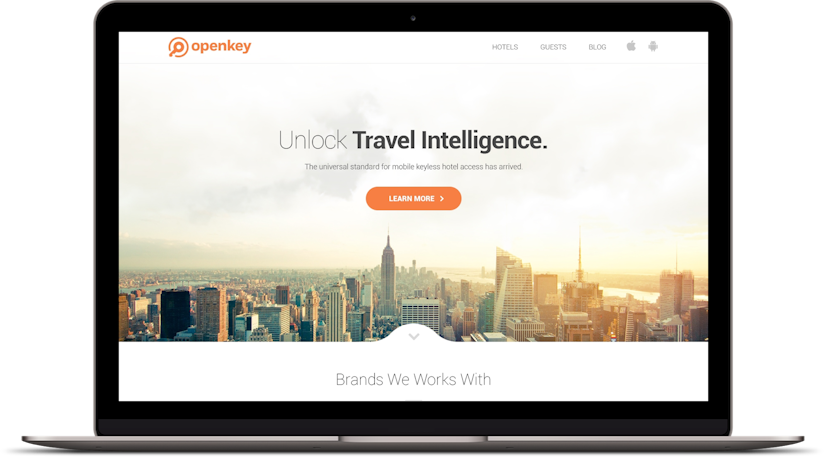All Categories
Featured
Table of Contents
- – Redtree Web Design - Pittsburgh Tips and Tricks:
- – Web Design Services By Freelance Website Desi...
- – $899 - Custom Mobile Friendly Website Design ...
- – Html Responsive Web Design - W3schools Tips a...
- – Web Page Design: A Comprehensive Guide - Adob...
- – Google Web Designer - Home Tips and Tricks:
- – Otc Web Design Girdwood, Alaska - Web Design...
- – Web Design Services - Verizon Small Business...
- – $899 - Custom Mobile Friendly Website Design...
- – Web Design Museum 1991 – 2006 Tips and Tricks:
- – Otc Web Design Girdwood, Alaska - Web Design...
Redtree Web Design - Pittsburgh Tips and Tricks:
Quick summary Usability and the utility, not the visual style, figure out the success or failure of a website. Considering that the visitor of the page is the only person who clicks the mouse and for that reason decides everything, user-centric design has actually established as a standard approach for effective and profit-oriented web style - web design frederick md.
and the utility, not the visual design, identify the success or failure of a site. Because the visitor of the page is the only individual who clicks the mouse and for that reason chooses whatever, user-centric style has ended up being a basic technique for successful and profit-oriented website design. If users can't use a function, it may as well not exist.
g. where the search box ought to be put) as it has already been performed in a number of articles; instead we concentrate on the methods which, utilized appropriately, can result in more advanced design decisions and streamline the process of perceiving provided details. Please notice that you may be interested in the usability-related short articles we've released before: Concepts Of Great Site Style And Efficient Web Style Guidelines, In order to utilize the concepts correctly we initially require to understand how users engage with websites, how they believe and what are the fundamental patterns of users' behavior.
Web Design Services By Freelance Website Designers - Fiverr Tips and Tricks:
Visitors glimpse at each new page, scan a few of the text, and click the first link that catches their interest or slightly resembles the important things they're looking for. In fact, there are large parts of the page they do not even look at. Most users browse for something intriguing (or useful) and clickable; as quickly as some appealing candidates are discovered, users click.
If a page provides users with top quality content, they want to jeopardize the material with advertisements and the design of the site. This is the reason why not-that-well-designed sites with top quality material acquire a great deal of traffic over years. Material is more important than the design which supports it.

Extremely basic principle: If a site isn't able to fulfill users' expectations, then designer failed to get his job done properly and the business loses money. The higher is the cognitive load and the less intuitive is the navigation, the more prepared are users to leave the site and search for alternatives.
$899 - Custom Mobile Friendly Website Design By Go Web ... Tips and Tricks:
Neither do they scan website in a direct fashion, going sequentially from one website section to another one. Rather users satisfice; they pick the first reasonable choice. As quickly as they find a link that looks like it might lead to the goal, there is a very excellent possibility that it will be instantly clicked.
It doesn't matter to us if we comprehend how things work, as long as we can use them. If your audience is going to imitate you're creating signboard, then design fantastic billboards." Users wish to be able to manage their internet browser and depend on the consistent information presentation throughout the website.
If the navigation and website architecture aren't instinctive, the number of enigma grows and makes it harder for users to comprehend how the system works and how to get from point A to point B. A clear structure, moderate visual clues and quickly recognizable links can assist users to discover their path to their aim.
Html Responsive Web Design - W3schools Tips and Tricks:

Because users tend to check out sites according to the "F"-pattern, these 3 declarations would be the very first aspects users will see on the page once it is loaded. The style itself is basic and intuitive, to understand what the page is about the user needs to browse for the response.
Once you've accomplished this, you can interact why the system is beneficial and how users can benefit from it. Do Not Squander Users' Perseverance, In every task when you are going to offer your visitors some service or tool, try to keep your user requirements very little.
Newbie visitors want to, not filling long web types for an account they might never use in the future. Let users explore the website and discover your services without forcing them into sharing private data. It's not sensible to force users to enter an email address to evaluate the function.
Web Page Design: A Comprehensive Guide - Adobe Xd Ideas Tips and Tricks:
Stikkit is an ideal example for an easy to use service which needs nearly nothing from the visitor which is unobtrusive and soothing. And that's what you desire your users to feel on your web site. Apparently, Mite requires more. The registration can be done in less than 30 seconds as the kind has horizontal orientation, the user does not even require to scroll the page.
A user registration alone is sufficient of an obstacle to user navigation to cut down on inbound traffic. Manage To Focus Users' Attention, As sites provide both fixed and dynamic content, some aspects of the user interface attract attention more than others do.
Focusing users' attention to particular locations of the website with a moderate use of visual aspects can assist your visitors to get from point A to point B without thinking of how it in fact is supposed to be done. The less enigma visitors have, the they have and the more trust they can establish towards the business the site represents.
Google Web Designer - Home Tips and Tricks:
4. Strive For Feature Exposure, Modern website design are generally slammed due to their approach of assisting users with visually appealing 1-2-3-done-steps, big buttons with visual results etc. But from the style point of view these elements really aren't a bad thing. On the contrary, such as they lead the visitors through the site content in a very basic and easy to use way.
The website has 9 primary navigation choices which are noticeable at the very first glance. What matters is that the material is well-understood and visitors feel comfy with the method they engage with the system.
Instead a price: simply what visitors are looking for. An optimum service for effective writing is touse short and succinct phrases (come to the point as quickly as possible), usage scannable design (classify the content, utilize multiple heading levels, use visual elements and bulleted lists which break the circulation of consistent text blocks), usage plain and objective language (a promo doesn't require to sound like ad; provide your users some sensible and unbiased factor why they should use your service or remain on your website)6.
Otc Web Design Girdwood, Alaska - Web Design & Google ... Tips and Tricks:
Users are seldom on a site to enjoy the design; in addition, for the most part they are searching for the info regardless of the style - web design frederick md. Make every effort for simplicity instead of complexity. From the visitors' point of view, the best site style is a pure text, without any ads or additional content blocks matching precisely the question visitors used or the material they have actually been searching for.
Finch clearly presents the info about the website and provides visitors an option of alternatives without overcrowding them with unneeded material. 7. Don't Hesitate Of The White Space, Actually it's truly difficult to overestimate the importance of white space. Not just does it assist to for the visitors, however it makes it possible to view the info provided on the screen.
Complex structures are more difficult to check out, scan, evaluate and deal with. If you have the option in between separating two design segments by a noticeable line or by some whitespace, it's generally better to use the whitespace solution. (Simon's Law): the better you handle to supply users with a sense of visual hierarchy, the easier your material will be to perceive.
Web Design Services - Verizon Small Business Essentials Tips and Tricks:
The exact same conventions and rules should be used to all elements.: do the most with the least quantity of cues and visual elements. Four significant points to be considered: simplicity, clearness, diversity, and focus. Simplicity includes only the aspects that are essential for communication. Clarity: all components need to be designed so their significance is not uncertain.
Conventions Are Our Pals, Standard design of website aspects doesn't lead to a dull website. As they minimize the discovering curve, the need to figure out how things work. For example, it would be a functionality nightmare if all sites had various visual discussion of RSS-feeds. That's not that different from our routine life where we tend to get used to basic principles of how we organize data (folders) or do shopping (positioning of products).
comprehend what they're getting out of a site navigation, text structure, search positioning etc. A case in point from use sessions is to equate the page in Japanese (assuming your web users don't know Japanese, e. g. with Babelfish) and supply your usability testers with a task to find something in the page of various language.
$899 - Custom Mobile Friendly Website Design By Go Web ... Tips and Tricks:
Steve Krug recommends that it's better to, but take advantages of conventions when you don't. 10. Test Early, Test Typically, This so-called TETO-principle should be applied to every web design project as usability tests typically offer into significant issues and issues connected to a provided layout. Test not too late, not insufficient and not for the incorrect factors.
Some crucial points to keep in mind: according to Steve Krug, and testing one user early in the job is better than testing 50 near completion. Accoring to Boehm's very first law, mistakes are most frequent during requirements and style activities and are the more costly the later on they are eliminated.
That indicates that you develop something, test it, repair it and after that test it again. There may be issues which haven't been discovered during the first round as users were almost blocked by other problems. functionality tests. Either you'll be indicated the problems you have or you'll be pointed to the lack of significant style flaws which remains in both cases a beneficial insight for your task.
Web Design Museum 1991 – 2006 Tips and Tricks:

This holds for designers. After you've dealt with a website for couple of weeks, you can't observe it from a fresh point of view any longer. You know how it is constructed and for that reason you understand exactly how it works you have the wisdom independent testers and visitors of your website wouldn't have.
It can be connected to other areas such as graphic style, user experience, and multimedia arts, however is more appropriately seen from a technological perspective. It has become a large part of individuals's everyday lives. It is difficult to envision the Internet without animated graphics, different designs of typography, background, videos and music.

During 1991 to 1993 the World Wide Web was born. Text-only pages might be viewed utilizing a basic line-mode internet browser. There had been no integrated technique to graphic style elements such as images or sounds.
Otc Web Design Girdwood, Alaska - Web Design & Google ... Tips and Tricks:
The W3C was produced in October 1994 to "lead the Internet to its complete capacity by developing common procedures that promote its evolution and guarantee its interoperability." This prevented any one business from monopolizing a propriety internet browser and programming language, which could have altered the effect of the World Wide Web as a whole.
As this has taken place the technology of the web has actually also moved on. There have also been considerable modifications in the method individuals use and access the web, and this has changed how websites are created. Given that the end of the browsers wars [] new web browsers have actually been launched. A lot of these are open source indicating that they tend to have quicker advancement and are more encouraging of new standards.
Learn more about Lovell Media Group LLC or TrainACETable of Contents
- – Redtree Web Design - Pittsburgh Tips and Tricks:
- – Web Design Services By Freelance Website Desi...
- – $899 - Custom Mobile Friendly Website Design ...
- – Html Responsive Web Design - W3schools Tips a...
- – Web Page Design: A Comprehensive Guide - Adob...
- – Google Web Designer - Home Tips and Tricks:
- – Otc Web Design Girdwood, Alaska - Web Design...
- – Web Design Services - Verizon Small Business...
- – $899 - Custom Mobile Friendly Website Design...
- – Web Design Museum 1991 – 2006 Tips and Tricks:
- – Otc Web Design Girdwood, Alaska - Web Design...
Latest Posts
What Is Web Design? The Ultimate Guide To Website Design ... Tips and Tricks:
53 Web Design Tools To Help You Work Smarter In 2022 Tips and Tricks:
Indianapolis Web Design And Digital Marketing Agency Tips and Tricks:
More
Latest Posts
What Is Web Design? The Ultimate Guide To Website Design ... Tips and Tricks:
53 Web Design Tools To Help You Work Smarter In 2022 Tips and Tricks:
Indianapolis Web Design And Digital Marketing Agency Tips and Tricks: